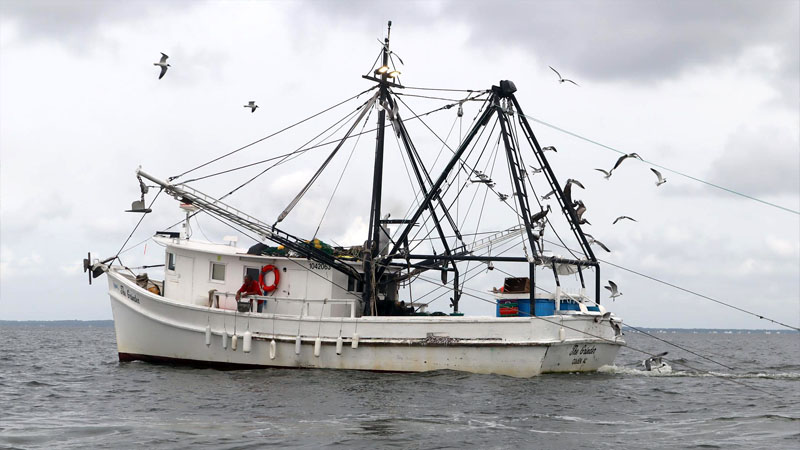Exclusive content

Mexico’s shrimp fishery faces a mounting crisis driven by the proliferation of cloned or duplicate vessels operating beyond regulatory oversight. These vessels—unnamed, unregistered, and often lacking fishing permits or concessions—threaten the sector’s sustainability and economic health. Over the past five years, average shrimp boat production has declined by 24%, shedding approximately 13,600 tons, a downturn fueled by illegal fishing, soaring fuel costs, trade barriers, and softening global prices.
The stakes are immense for an industry that intertwines ecological diversity with economic importance. As rogue operators evade control, their impact reverberates from coastal communities to international markets, raising urgent questions about governance and resilience in one of Mexico’s vital maritime sectors.
The Menace of Cloned Vessels
Cloned or duplicate vessels pose a formidable challenge. Operating from unauthorized landing sites, these illicit fleets obscure their activities, making it nearly impossible to verify compliance with closed seasons or restrictions on fishing gear and methods. Their catches often bypass legal oversight, entering markets either undocumented or with falsified papers, sometimes involving species harvested out of season.
This shadowy trade distorts competition, undercuts legitimate fishers, and strains marine ecosystems. The lack of transparency not only complicates enforcement but also undermines trust in the supply chain, a critical concern for an industry dependent on export credibility.
A Production Slump with Wider Fallout
The impact of these disruptions is starkly visible in the data. In the 2023-2024 season, national shrimp production reached 49,214 tons, valued at approximately $200.2 million (3.921 billion pesos). This figure, while significant, reflects a sharp decline from previous years, exacerbated by illegal fishing during breeding seasons, which depletes stocks at critical times.
Meanwhile, broader agri-food production shows resilience, edging up from 244,043 tons in 2023 to 244,179 tons in 2024, according to the Agri-Food and Fisheries Information Service. Yet the shrimp sector struggles, weighed down by high fuel costs, trade restrictions, and falling international prices, highlighting its fragility within a relatively stable industry.
Exports and Market Dependence
Shrimp exports remain a lifeline, totaling 10,536 tons in 2024 and generating $112 million. The United States dominates as the primary market, absorbing 9,776 tons—93% of the total—underscoring Mexico’s heavy reliance on its northern neighbor. This concentration heightens vulnerability to U.S. trade policies or shifts in demand.
Key exporting states, including Sinaloa, Sonora, Tamaulipas, Nayarit, Campeche, Baja California Sur, and others, drive this output. Their coastal economies depend on the fishery’s success, amplifying the consequences of its current challenges.
Species Diversity Under Threat
Mexico’s shrimp fishery boasts a rich array of species. The Pacific and Gulf of California coasts host ten varieties, with white, blue, brown, and red or crystal shrimp leading in commercial value. The Gulf of Mexico and Caribbean yield seven, including white, brown, pink, and seven-beard shrimp, prized in both domestic and export markets.
This biodiversity, however, is under pressure. Illegal fishing threatens stock sustainability, challenging the industry’s ability to balance exploitation with conservation—a tension exacerbated by unregulated operators.
Aquaculture’s Growing Dominance
Amid these challenges, aquaculture has eclipsed traditional fishing as the primary source of shrimp production. In 2022, it accounted for 80% of output, delivering 7,053,348 tons, while fishing contributed 20%, or 1,737,940 tons. By 2023, aquaculture shrimp production reached 194,083 tons, reflecting a strategic shift to meet demand while reducing pressure on wild stocks.
This transition, however, is not a cure-all. Illegal fishing continues to undermine aquaculture’s gains, exposing enforcement gaps that threaten the sector’s long-term viability.
The Broader Fishing Landscape
Beyond shrimp, Mexico’s fishing and aquaculture sectors remain robust. In 2024, total production reached 2,033,654 tons—273,941 tons from aquaculture and 1,759,713 tons from capture fisheries—valued at approximately $1.92 billion (37,588 million pesos). Aquaculture contributed $933.5 million (18,275 million pesos), while fishing added $986.6 million (19,313 million pesos). Sonora, Sinaloa, and Veracruz lead in aquaculture, while Sonora, Baja California, and Sinaloa dominate capture fisheries, highlighting regional strengths.
Shrimp tops aquaculture output at 273,940 tons, followed by mojarra (46,603 tons) and oysters (24,715 tons). In capture fisheries, sardine (650,545 tons), anchovy (308,621 tons), and tuna (154,737 tons) lead, with shrimp at 36,732 tons. This diversity underscores the sector’s scale, yet shrimp remains a linchpin.
The shrimp fishery in Mexico stands at a critical crossroads. Cloned vessels and illegal fishing, combined with economic pressures and market dependencies, have taken a heavy toll. As production falters, the industry’s challenges cast a long shadow over its ecological and economic contributions, demanding urgent action to safeguard a sector too vital to fail.